Today we can’t imagine our work routine without task management. It helps you to save valuable resources, increase productivity and efficiency. Task management becomes an essential part of each collaboration process in organizations. Therefore, Microsoft Planner is the most Office 365 popular app for managing your team’s daily routine and track tasks lifecycle. And how to align Microsoft Teams with the Planner? How to automate the process of assigning the tasks and reduce time spent on manual activities? With Power Automate you can easily build the automation flows to perform any use case related to your organizational needs. In this article we describe the most useful Power Automate flows for Microsoft Teams and Planner. So, you can repeat them in just a few minutes.
Take advantage of using Power Automate and Microsoft Planner
Improve task management
When you automate the process of managing of assigning tasks, make sure you don’t forget your goals and essential tasks. Therefore, with Power Automate you can manage additional notifications, connect your calendar, automatically create a new Planner, and so on. This will boost your team’s productivity and efficiency.
Reduce time spent on manual tasks performance
Using the Software to manage tasks, such as Planner helps you to organize your work. At the same time, you as a manager still need to manually create tasks and spend time on manual routines. With Power Automate you can get Planner created automatically from messages in Teams, emails, items in SharePoint, and so on. Therefore, you will stay focused on the project’s progress and your team’s performance without wasting time.
Improve your team collaboration
It’s quite easy to manage tasks just for one person. But in today’s work environment you need to manage tasks and assign them to the entire project team. Often teammates need to collaborate on the same task, share updates and start discussions. Using Power Automate you’re able to scale your system of task management across the entire organization. In addition, connect Planner with other apps to get a unique and cross-platform environment.
Microsoft Planner connector for Power Automate – simplify daily tasks
Now, let’s try to build your first Power Automate flow using the Microsoft Planner connector to simplify your daily tasks. To do this, open Power Automate and find the Microsoft Planner connector.
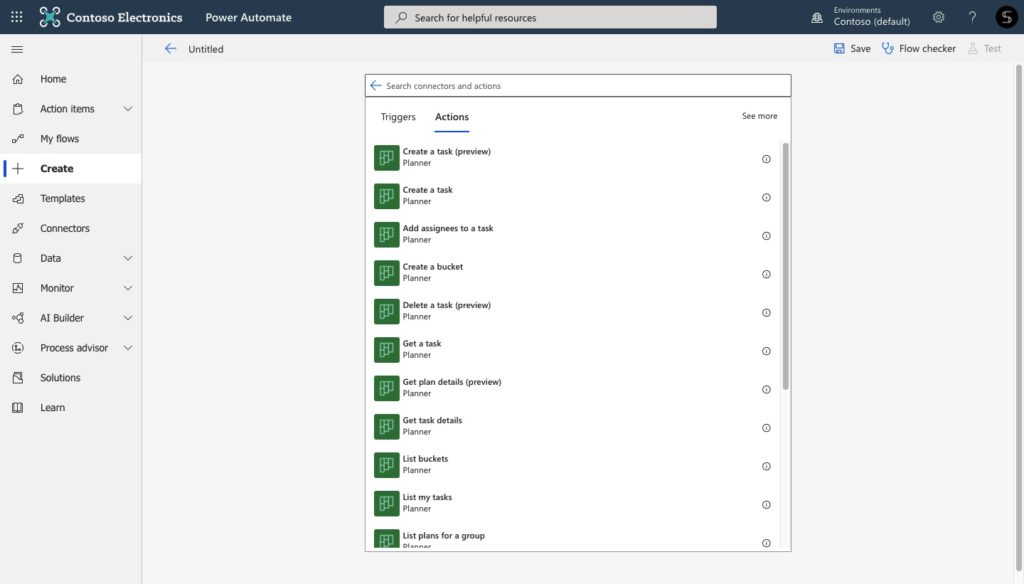
You will see multiple actions and triggers that you can use to streamline processes. Let’s start with some basic examples.
Connect your agenda with Microsoft Planner
Normally task managers work in conjunction with their teammates’ calendars. Therefore, with Power Automate you can easily connect the Outlook Calendar and Microsoft Planner.
Let’s say your sales rep has an event in Outlook Calendar, for example, a demo call with a prospect. And he needs to prepare a unique sales pitch. You can build a flow connecting Outlook and Planner to make sure your teammate won’t forget about the pitch.
To do this find the Outlook connector in Power Automate and choose a trigger “When a new event is created”. Here you can find all your existing calendars.

Then, search for Planner connector and choose the action “Create a task”.
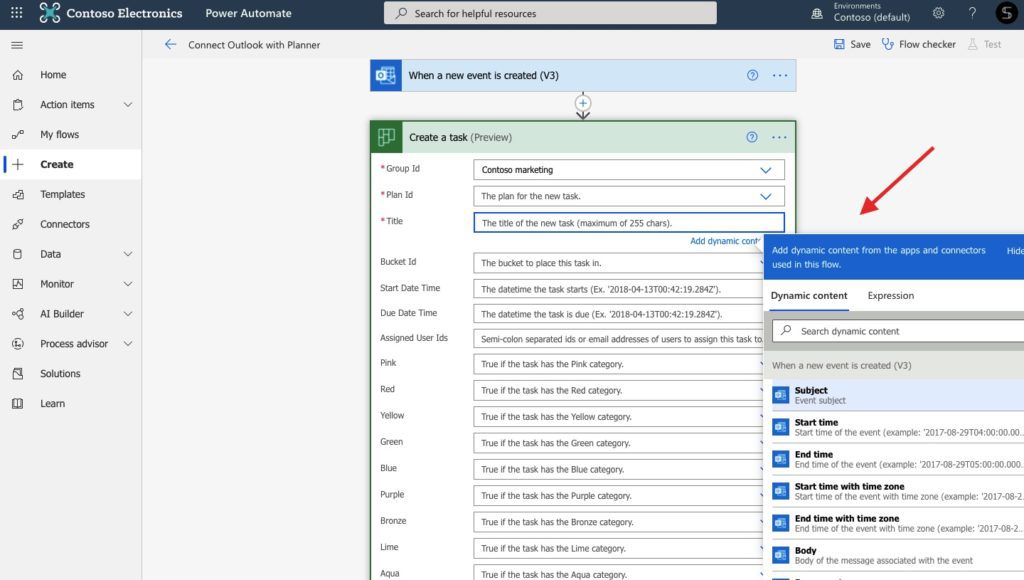
Microsoft Teams & Planner: Best practices
Learn how to make the most of Teams & Planner integration and build teams with pre-built Planner task boards
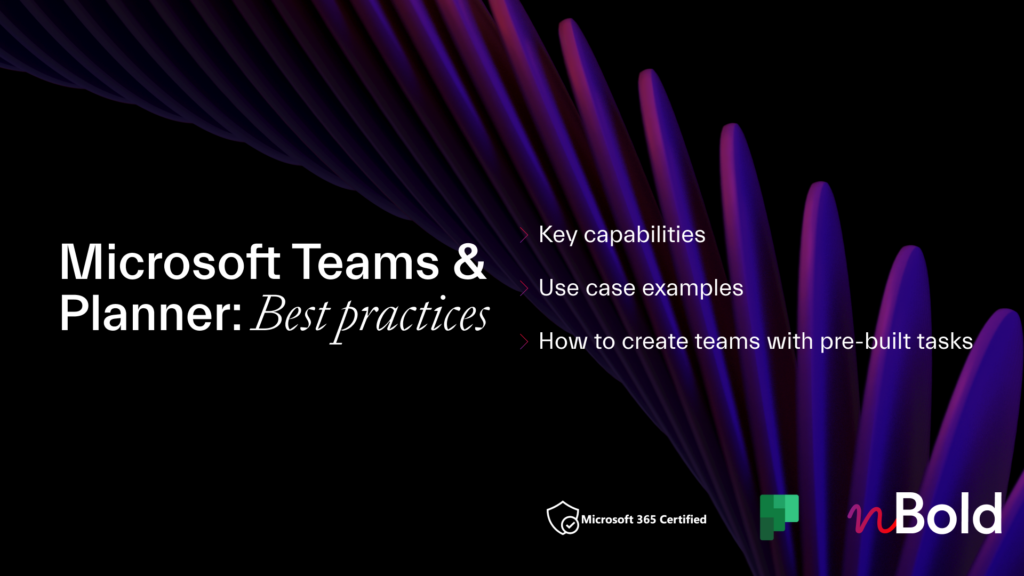
Choose your team in Microsoft Teams and Planner ID. Moreover, you can customize the feature tasks with dynamic content from Outlook. For example, add the event’s subject as the task’s title, and synchronize a time from the Outlook with a start and due date for the task.
With this simple flow, you will have an automatically created Planner task each time a new event is created into your personal Outlook calendar. You can build this flow for your team’s calendar, so every team member won’t miss an important task.
Learn How to Build Collaboration Templates with Planner
Manage outstanding Planner tasks
Struggling with missing deadlines? Manage additional notifications and stay updated with outstanding tasks. With this template, you will get an email listing all outstanding to you every Monday morning.
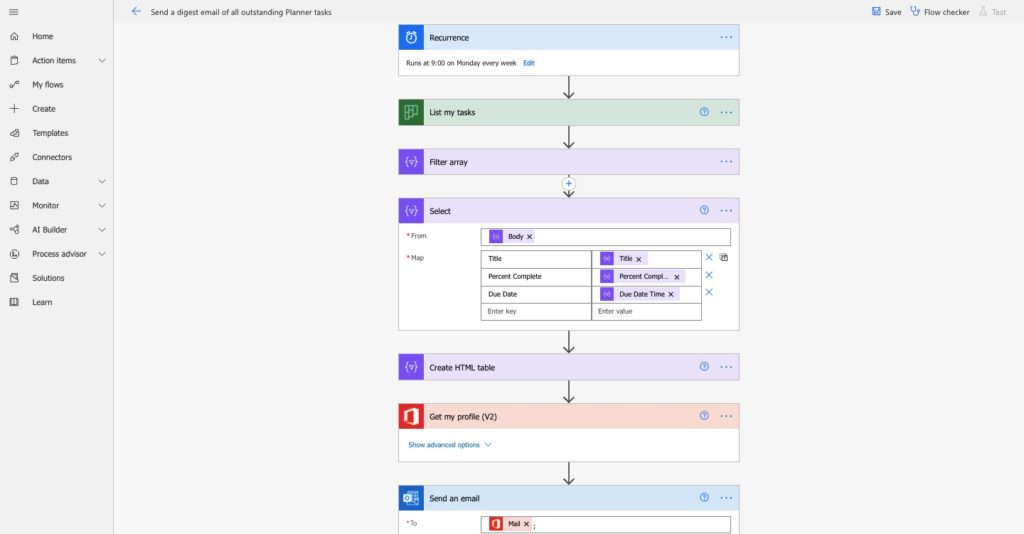
Customize this flow according to your needs, change frequency, user profile, etc. Moreover, instead of action “Send an email” you can send a Teams post. Therefore, each teammate will focus on what is important first.
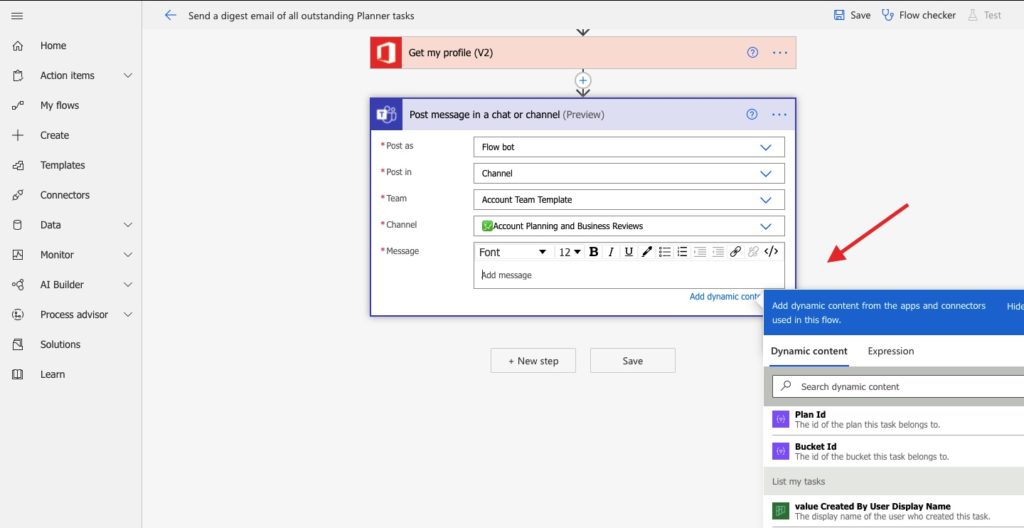
Review documents with Microsoft Planner
Now let’s say your teammates from the legal department will need to approve the contracts before sending them to the customers. How to automate the approval process and don’t miss any important files? Connect Microsoft Planner with your SharePoint library and make sure approvers will get a new task each time when a new file is created in your documents’ library.
To do this, search for the SharePoint trigger “When a new file is created”. Then choose the right Site Address and Library Name.
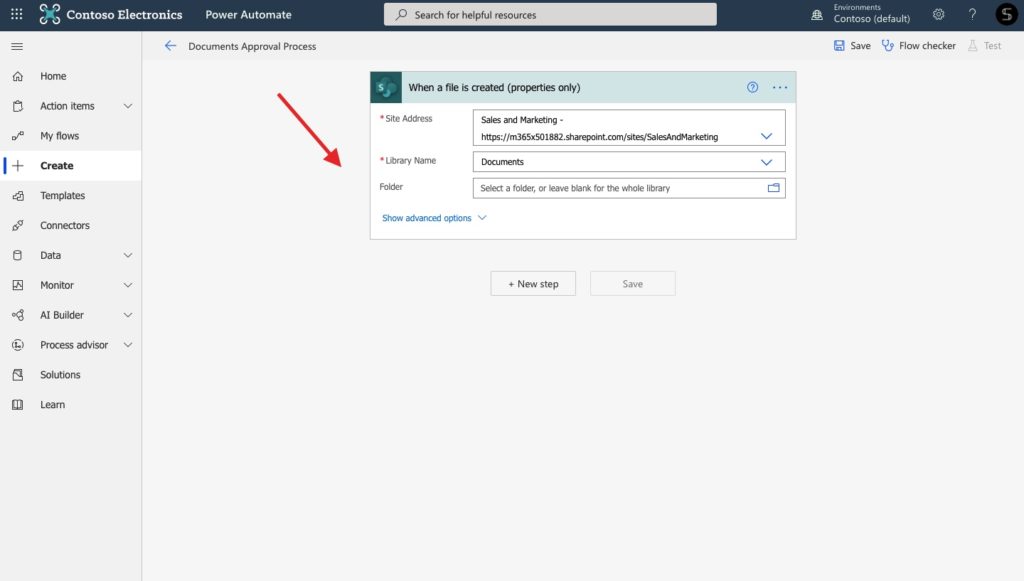
Then, choose the Planner action “Create a new task”. And customize the feature tasks with a title, assigned to, etc.
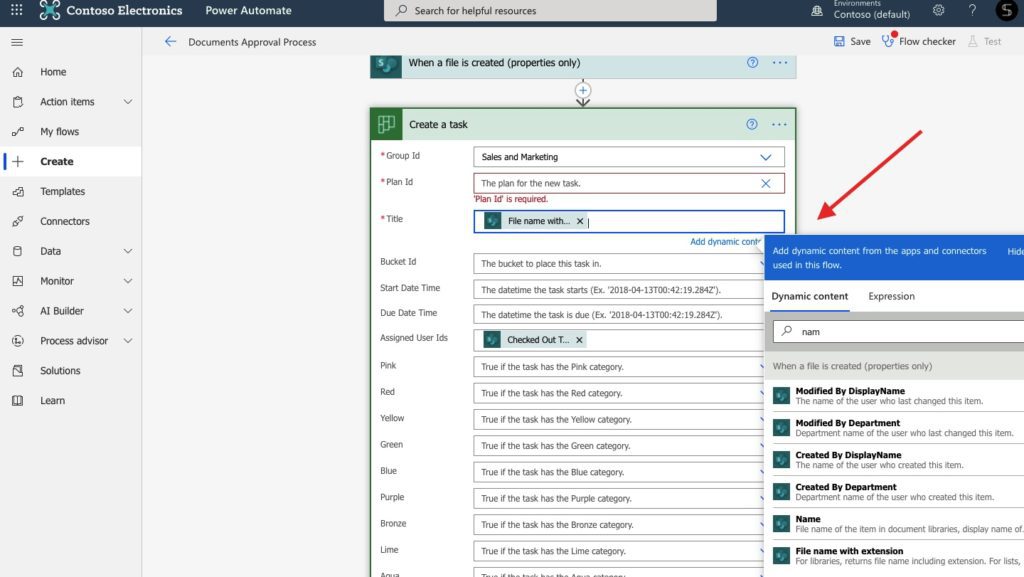
Now, every time a new file is added to a certain folder in a SharePoint document library, a task will be created in Microsoft Planner.
→Download White Paper: Microsoft Teams & Planner Best Practices
Connect Planner with Microsoft Teams using Power Automate
Now, let’s say you have a team in Microsoft Teams to collaborate on a project. First, you can add Microsoft Planner as a new tab to the needed channel. This will allow your teammates to track activities, manage their workday, and together progress on a project. Read more about Microsoft Planner with Teams.
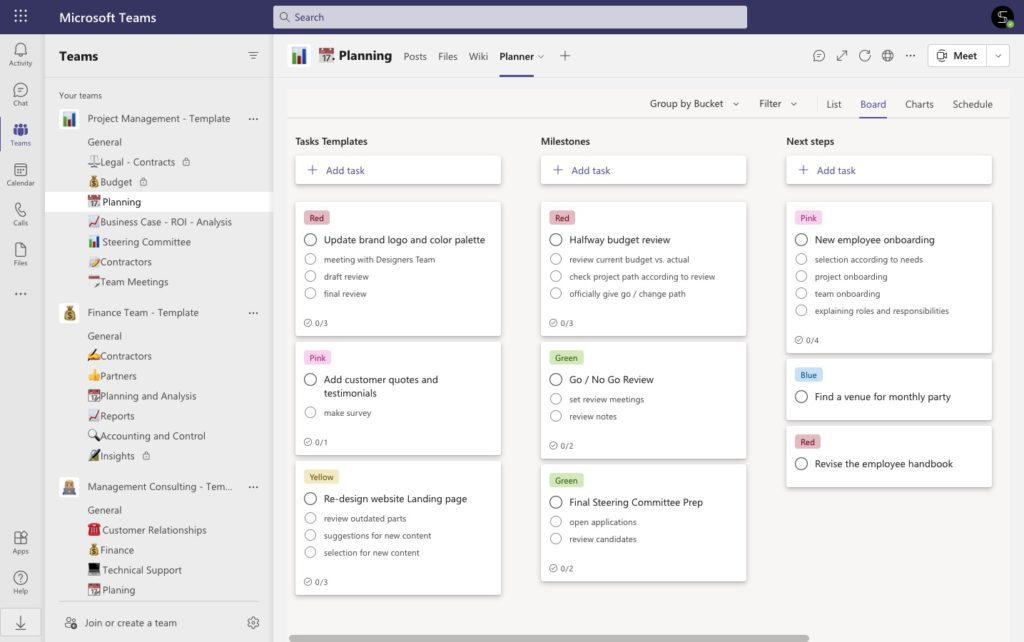
But you still may wonder how to automate your task management by connecting both Microsoft Teams and Planner environments. Therefore, we will describe some common use cases that you can implement into your task management process.
Manage Teams notifications when a task is created in Planner
When someone assigns you a task, you will get a Teams notification. In the same way, you will get a notification when a task is completed but only if you’re assigned to this task as well. But imagine, if you cannot start some of your tasks before another task won’t be completed by someone else. Or if you’re a project manager and you need to track all completed tasks to track the project’s progress. In these cases, you need to set up additional notifications. And there is nothing easier than creating a flow in Power Automate. Let’s manage Teams notification with Planner and Power Automate.
Find the Microsoft Planner and choose a trigger “when a task is completed”. You can also choose a trigger “When a task is assigned” to make sure your teammates won’t miss upcoming tasks.
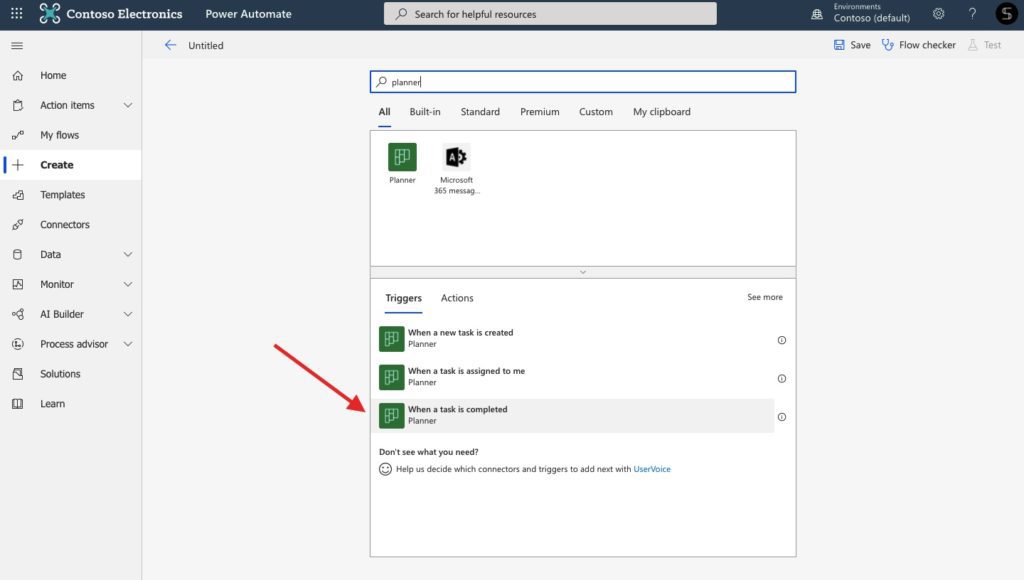
Then, choose the action from the Microsoft Teams connector “Post a message”. Add the right team and channel and customize your message using dynamic content from Planner.
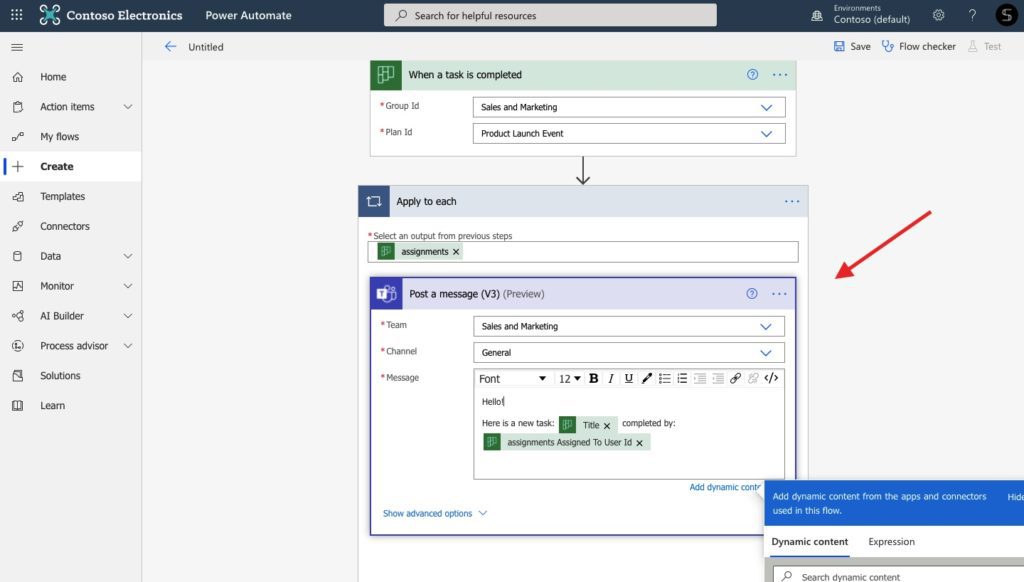
Now, each time when a task is completed, your teammates will get a Teams post. Therefore, your team can easily track the project’s progress. In addition, there is no need to manually notify other team members about the tasks completed.
In the same way, you can manage daily Teams’ posts to notify your teammates about the upcoming tasks.
Build a flow using Conditions “if yes/no” and get daily Teams posts with the tasks that are due to tomorrow.
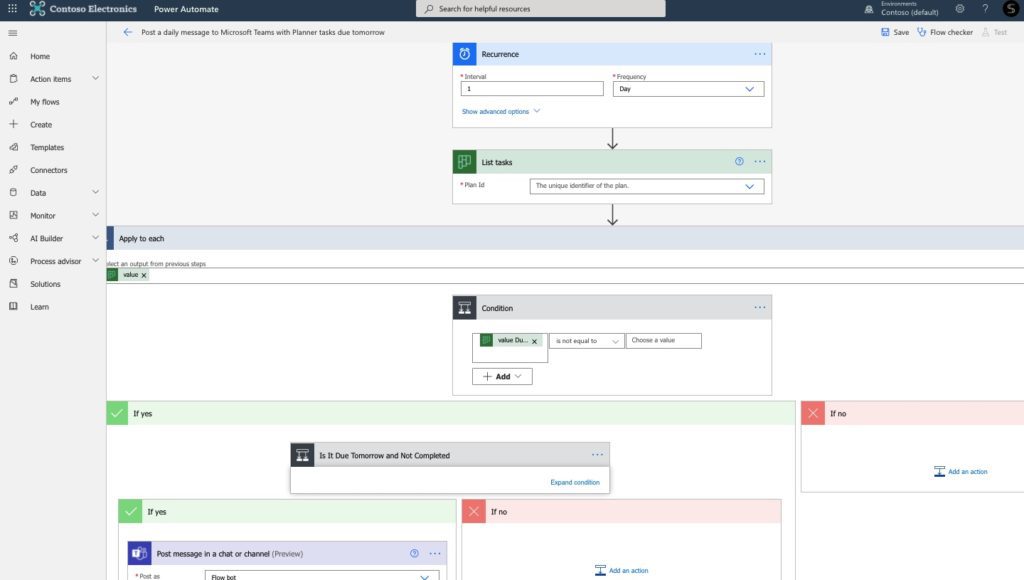
Create Planner tasks from a Microsoft Teams message
Next, let’s say your colleagues share new sales deals via channel posts in Microsoft Teams. Usually, when a new deal is created, your teammates will need to build additional content, such as a unique sales pitch, agreement, pricing docs, etc. How to make sure your teammates won’t miss new sales tasks? Build a Power Automate flow to easily create Planner tasks from the Microsoft Teams message.
Choose the Microsoft Teams trigger “for the selected message” and connect it with Planner action “create a new task”. Customize your task using dynamic content from the Microsoft Teams message.
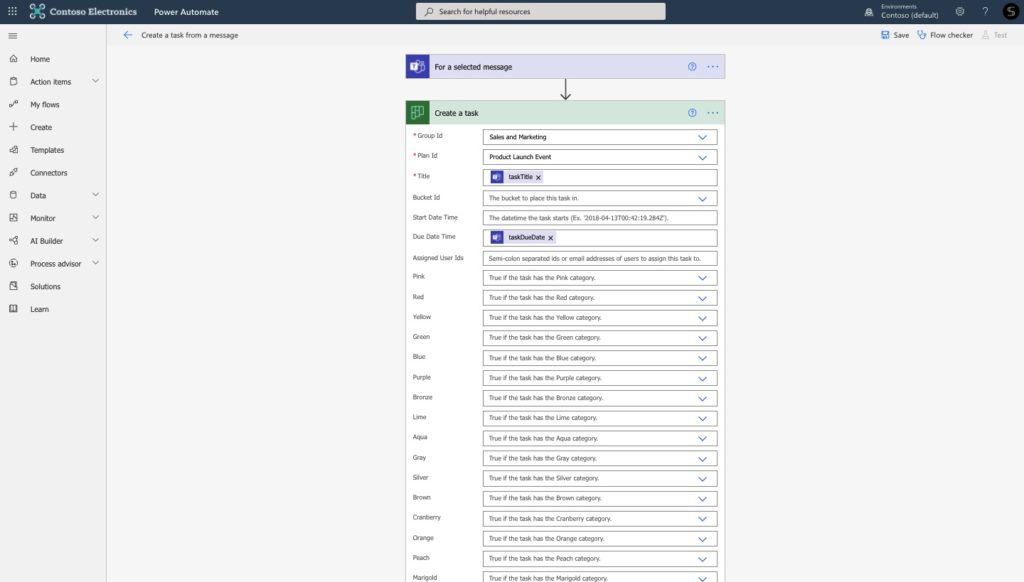
And now, you can just click on dots on the post message and create a new task in a just few seconds.

Create SharePoint item with a Planner task is approved
No, let’s add approval to your task management process. Suppose your marketing team is working on your blog. You need to approve each article before publishing this on your website. At the same time, you have the SharePoint documents library to store your internal files. Let’s build a flow with approvals connecting Teams, SharePoint.
First, choose the Planner action “when a task is completed”. Then add an action from approvals “Start an approval”. This means, each time when your marketing manager completes a task on blog article creation, an approver will get a Teams notification telling him he needs to approve a new task completed.
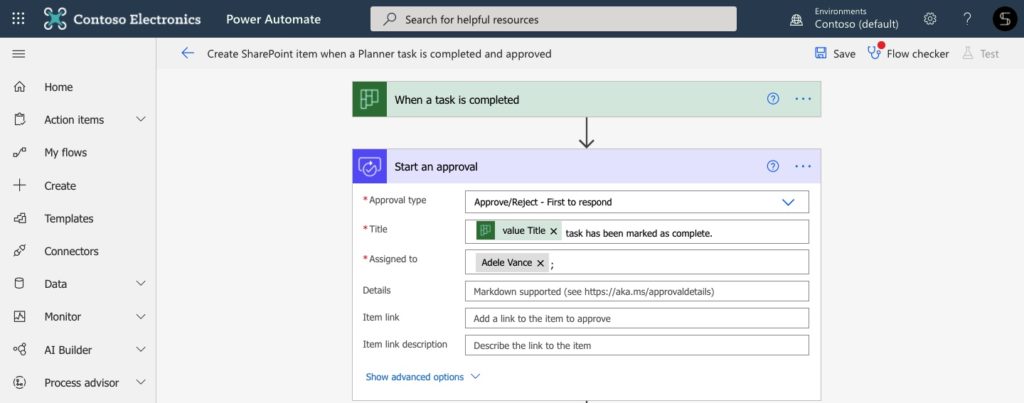
Then, start the “yes/no” condition. If the task is approved, create a new item into the SharePoint list and post a message in Teams on completed tasks. If no, post the rejected message in teams. Customize your messages with dynamic content from the Planner.
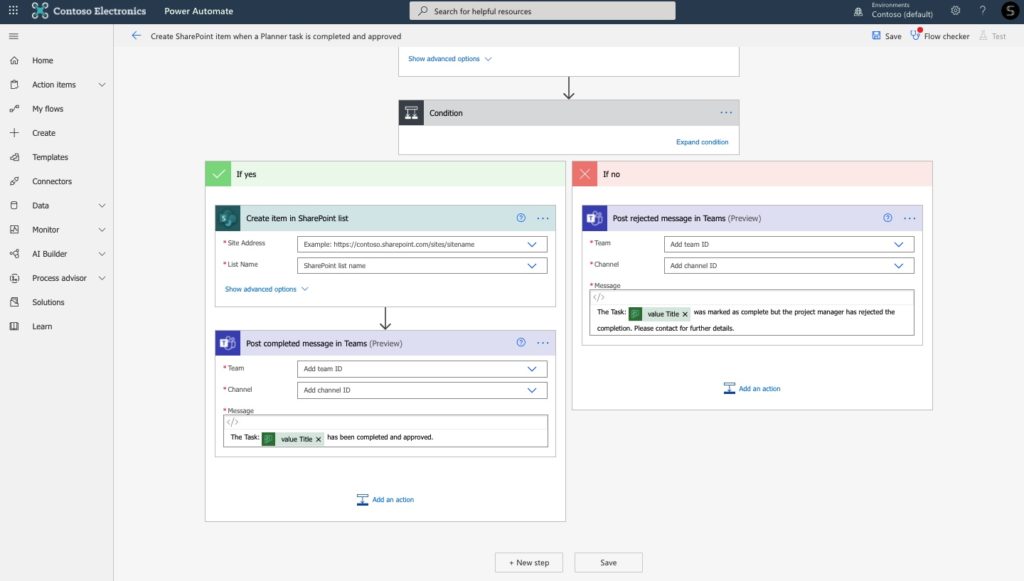
It’s done! No, an approver will get a notification when a task in a specific Planner is completed. In addition, a new SharePoint item will be created in your Documents library.
Planner with Microsoft Teams Templates
Finally, we would like to describe how you can improve your teams’ collaboration with Microsoft Teams templates and the Planner tab. Let’s say, you’re a project manager. You need to run multiple projects and get the same level of execution from one project to another. When a new project is coming, you have the same process from one project to another. You need to build a project team, create project documentation, discuss KPIs and milestones, etc. So how to automate processes and scale them across the entire organization?
Leverage Power Automate nBold connector
First, you can explore the connector for Power Automate. With the nBold connector, you can structure your Teams environment with team creation from the templates, automated channels creation, and much more.
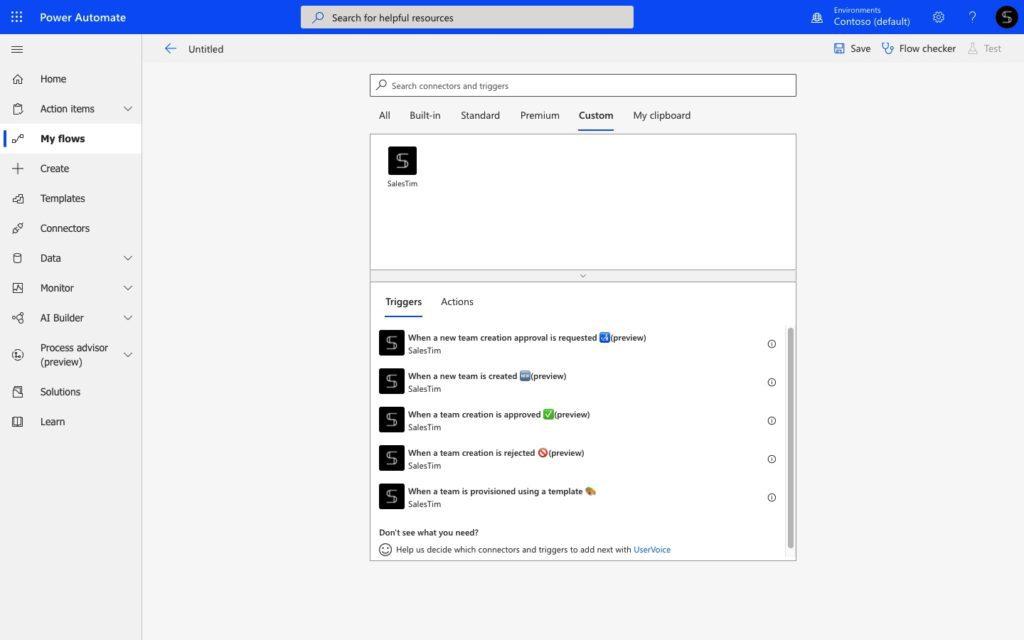
As we’re talking today about the Microsoft Planner, let’s discuss one example. Below, we’re talking about the project manager who wants to get the same Planner tab from one project to another. Therefore, by building a Power Automate flow using the nBold connector, you will be able to create a customized Planner tab each time when a new project team is created.
Choose the Microsoft Teams trigger “When a new team is created” and add the nBold action “add a new tab with an app”. Then just add your Planner URL.
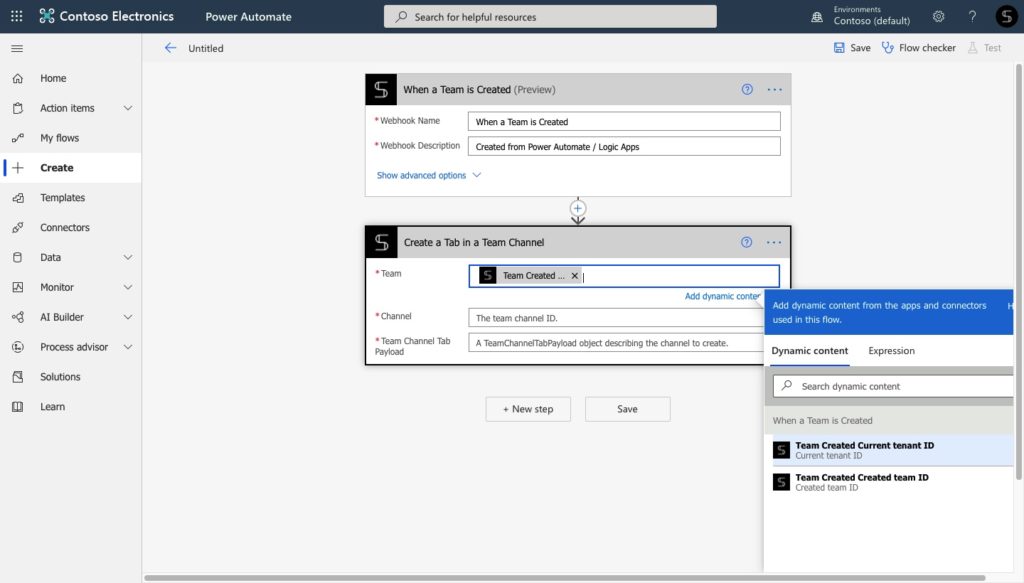
With this simple flow, when a new team is created in your environment, you will get the pre-built Planner tab with all upcoming tasks. Therefore, you can build a project management Planner just once and automatically copy this to each newly created team.
Automatically create teams with Planner tab
One more solution is to build Collaboration Templates with the Planner Tab included. Hence, you can build a Project Management Template just once and create teams from the template each time a new project is coming.
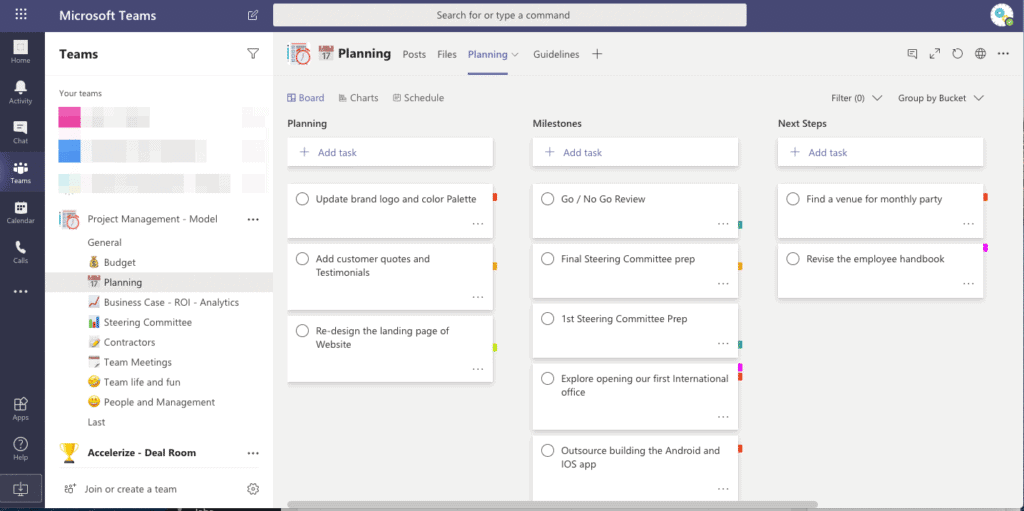
To do this, build an original project management team just once. Add standard and private channels and upload all project documentation, such as guidelines, templates, etc.
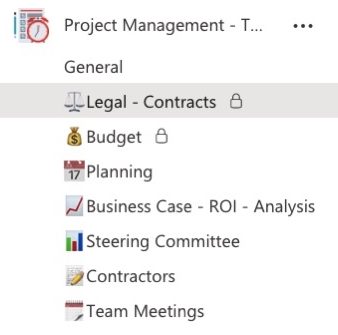
Then, add a Planner as a new tab. Build a new Planner or add an existing one to get the standardized project tasks that are the same from one project to another.
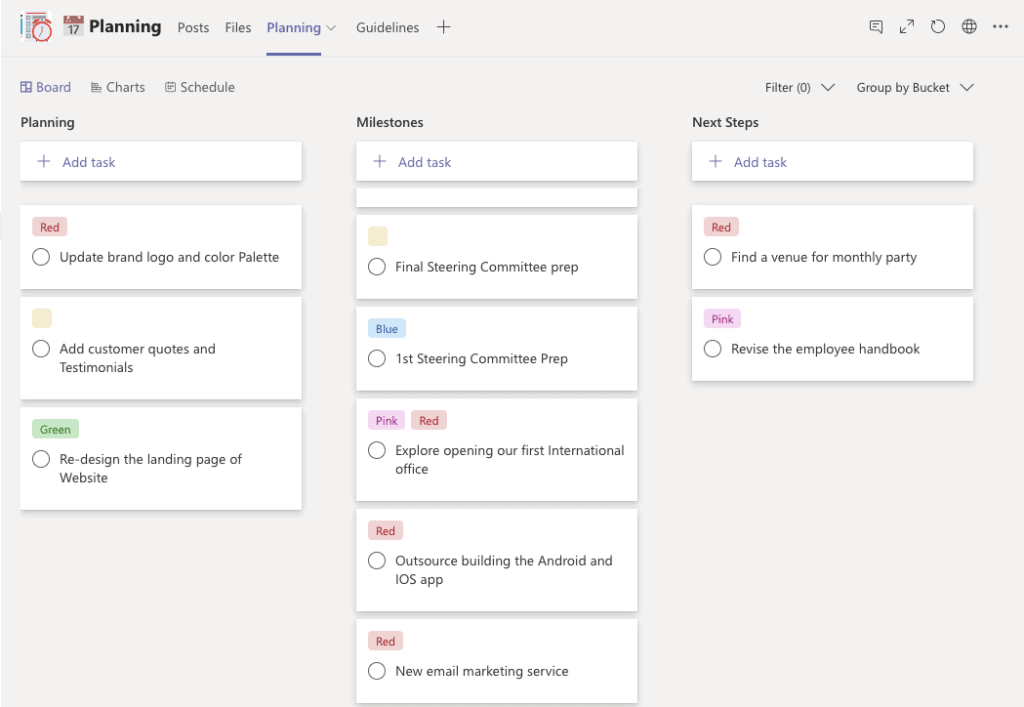
When the original team is ready, build the Project Management Template from this team.
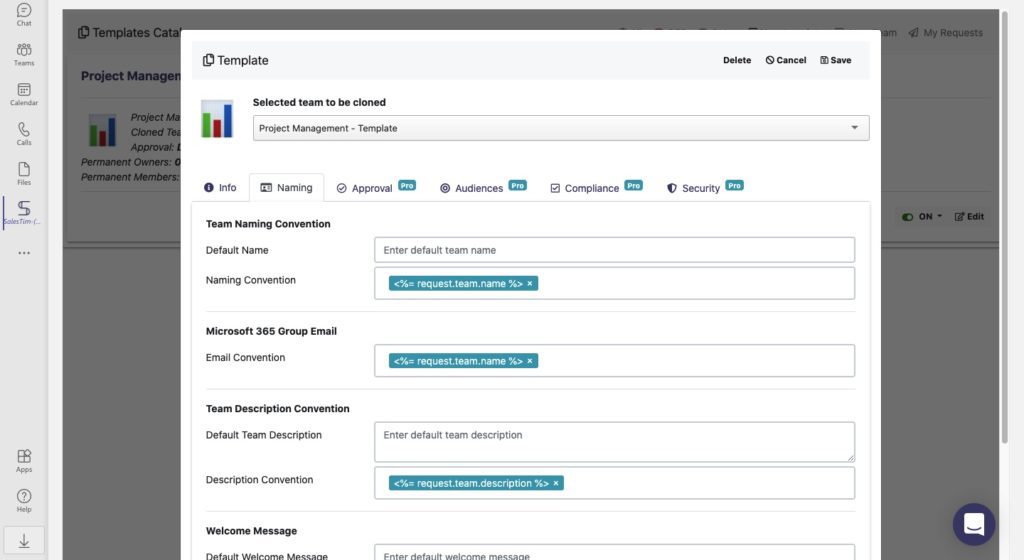
Now, your Project Management template is added to your own Templates Catalog. Here is stored all your templates for different use cases, such as project management, account management, sales deals collaboration, and so on.
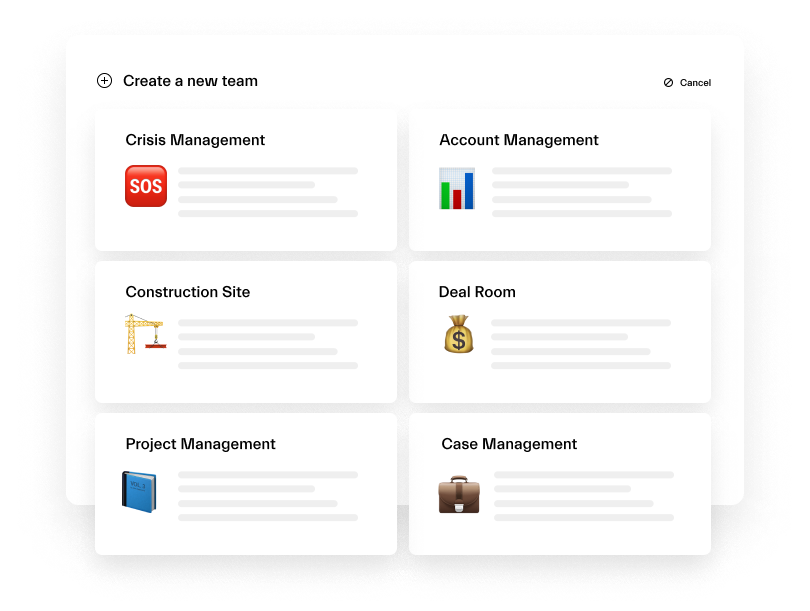
It’s done! Now, each time when a new project is coming, you just need to create a new team from your Project Management template. Make sure all the content will be copied in just a few seconds, including channels, files, and the Planner Tab.
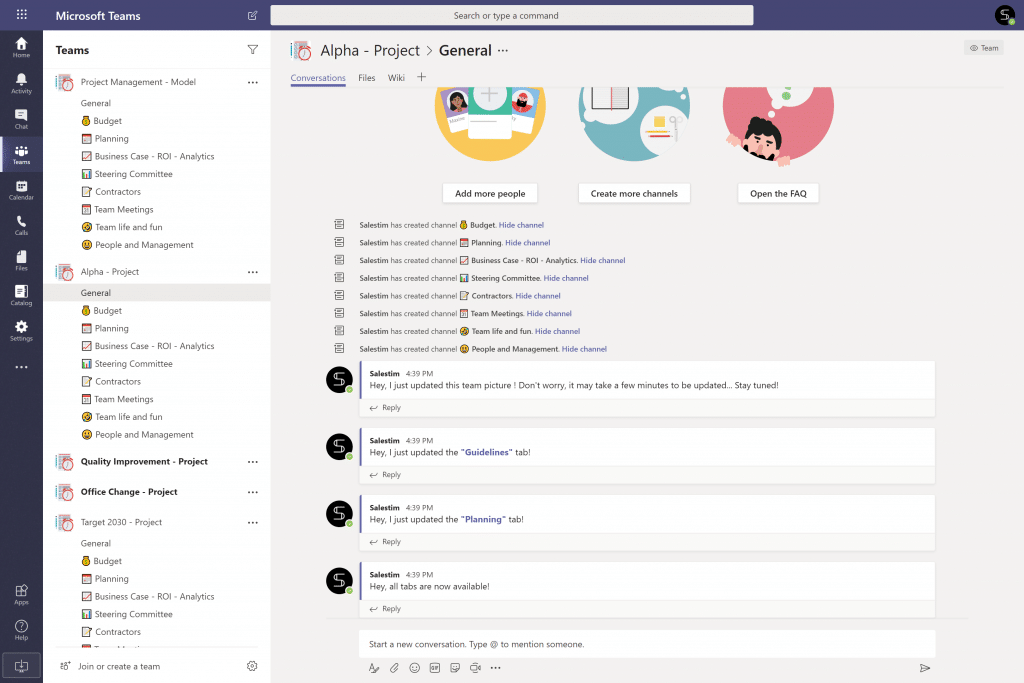
Very easily you can get the structured workspace by creating standardized teams for each new project, sales deal, department, and so on. And your Planner tab will be copied as well. Therefore, your teammates won’t miss any important task and can start to collaborate on a straightforward project straight away.
Learn how to build Collaboration Templates with Planner and improve your collaboration at scale.
